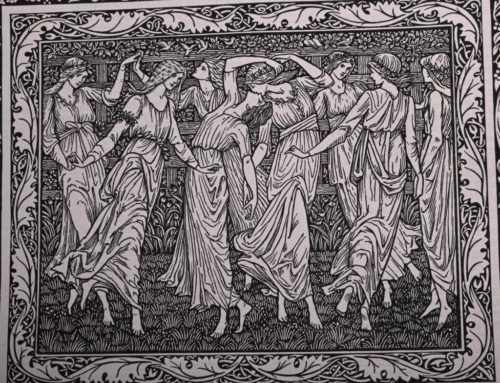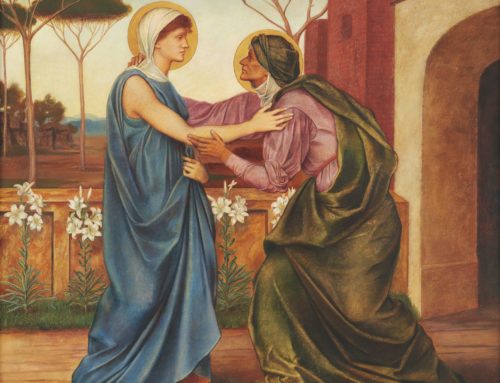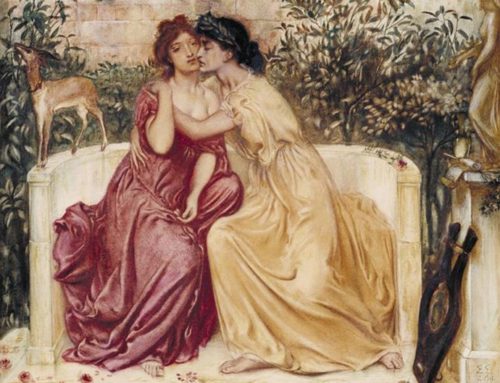Evelyn De Morgan, a celebrated artist of the late 19th and early 20th centuries, is perhaps best known for her ethereal and allegorical paintings that reflect her Spiritualist beliefs and concerns about mortality. However, before her marriage to ceramicist William De Morgan, and her introduction to his mother Sophia, who was a Spiritualist Medium, it was Evelyn’s upbringing, education, and friendships that played a pivotal role in shaping her artistic journey. She was taught languages and classics as a child, and attended church regularly with her father and her friends, resulting in paintings with mythological and biblical subjects that are quite different from her later pictures.
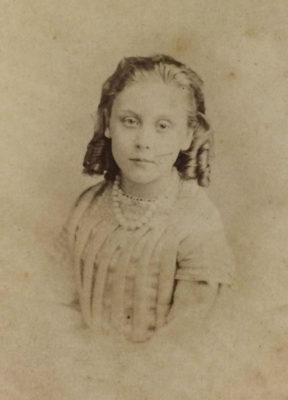
Evelyn De Morgan aged about 8 years old
Born into an upper-class family on Bryanston Square in London, Evelyn De Morgan’s early life was one of privilege and exposure to a world of culture and refinement. Raised by her parents, Evelyn was provided with a rich environment that fostered her intellectual growth and artistic potential.
Evelyn’s education was far from conventional. She was educated at home with visiting tutors who imparted knowledge in diverse subjects such as mathematics, classics, and languages. This foundation of learning would later contribute to the sophistication of her artistic themes.
Eager to pursue her artistic talents, Evelyn enrolled at the National Art Training School in 1872, followed by admission to the prestigious Slade School of Art in 1873. These institutions allowed her to refine her skills and learn from some of the best artists of the day, such as the Aesthetic Movement artist, Sir Edward Poynter.
Evelyn’s early artistic endeavours revolved around mythological and biblical themes. Her painting ‘Ruth and Naomi’ reflects her interest in religious narratives and the portrayal of strong female relationships. This early work showcases her ability to infuse emotion and storytelling into her pieces, setting the stage for her future masterpieces.
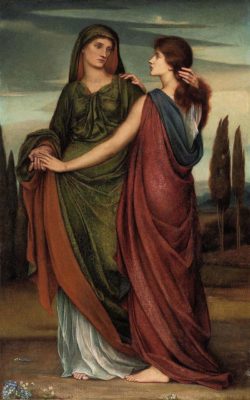
‘Ruth and Naomi’ by Evelyn De Morgan
The recent research into the life of artist and biographer Emilie Barrington by David Webber for his PhD has revealed the detailed diaries of Barrington’s sister, Eliza Bagehot. Evelyn De Morgan was clearly a regular acquaintance of Bagehot and close friend of Barrington as they spent much time together. The diaries show that De Morgan’s circle of friends included prominent artists and thinkers of her time. Her friendships with individuals like GF Watts, Emilie Barrington, Marie Spartalli Stillman, and Teresa Thornycroft allowed her to exchange ideas, receive feedback, and develop as an artist.
These diaries also reveal that De Morgan regularly visited institutions like the British Museum and the National Gallery which exposed her to a diverse range of artistic styles and historical periods. Attending theatre performances, such as Shakespeare’s “Loves Labour’s Lost,” and religious sermons by Mr. Harris, broadened her understanding of human emotions and narratives, which she channeled into her art.
Evelyn De Morgan’s exposure to influential circles and her continuous cultural engagement paved the way for her artworks to be showcased at prestigious exhibitions, notably the Grosvenor Gallery where she was invited to exhibit at the inaugural show. Here she display her painting ‘Ariadne at Naxos’ which was one of her earliest paintings to have subversive undertones. The painting depicts Ariadne, abandoned by Theseus, on the island of Naxos. The composition captures the melancholy and solitude of Ariadne, showcasing Evelyn’s skill in conveying complex emotions through her art. Could the painting be a comment of the abandonment of disenfranchised women by society and in politics? It certainly foreshadows her fascination with allegorical themes of her later works. Her skilful merging of mythology, spirituality, and emotion resonated with the sensibilities of the time, gaining her recognition and acclaim among art connoisseurs and critics alike.
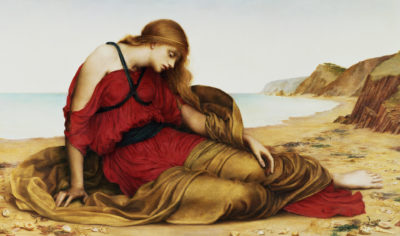
Ariadne at Naxos by Evelyn De Morgan
After 1885, when Evelyn became engaged to William De Morgan, her paintings became influenced by Spiritualism. She would use complex symbolic imagery to depict ethereal themes such as life, death, night and day. Before this, her artistic world was shaped by mythological and biblical subjects she was comfortable with from childhood and the influence of her artistic circle of fashionable friends.


